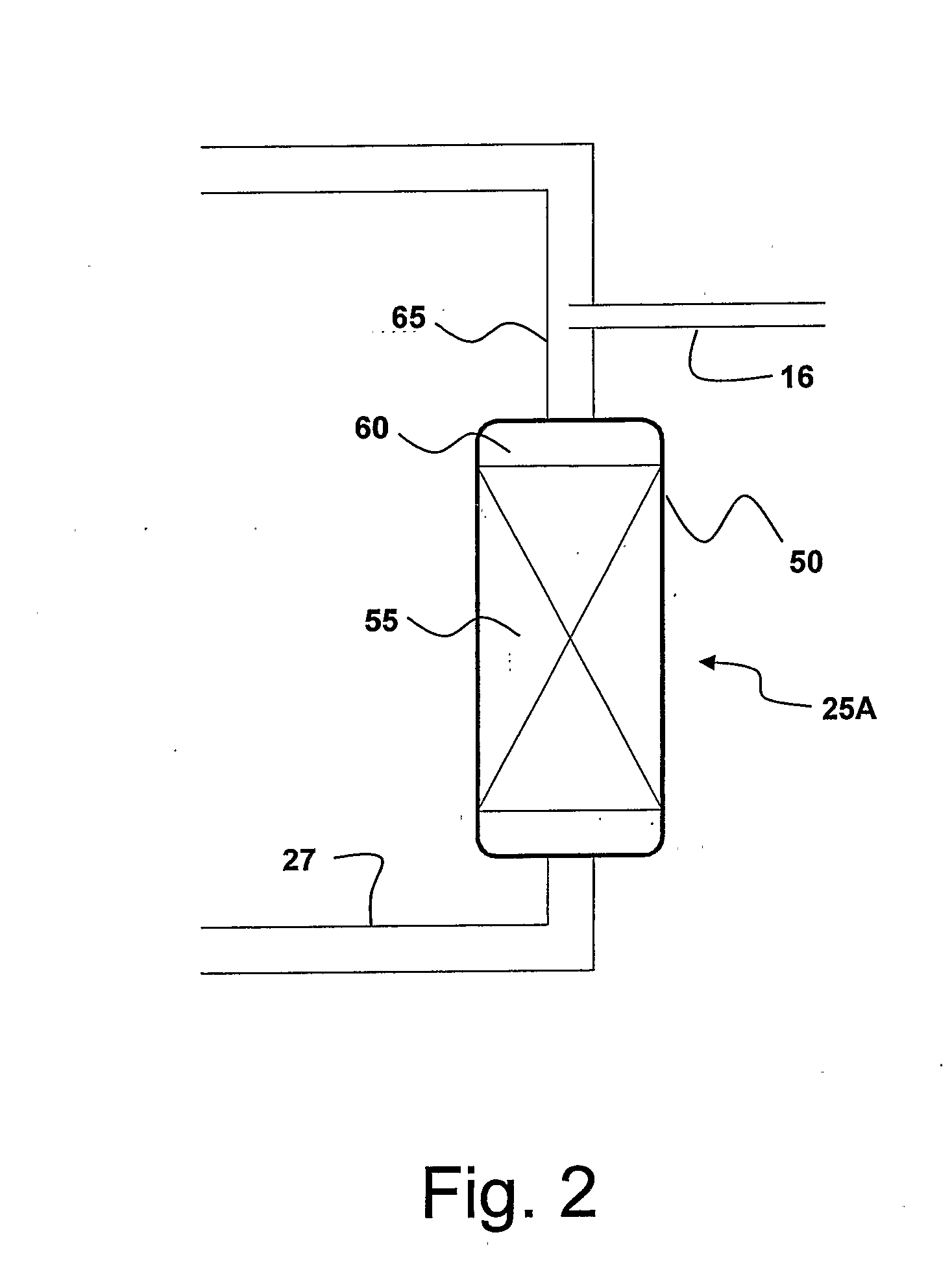Concurrent Sulfur Dioxide Oxidation Process and its Use in Manufacture of Tetrabromophthalic Anhydride
a technology of tetrabromophthalic anhydride and sulfur dioxide, which is applied in the field of oxidation of sulfur dioxide to sulfur trioxide, can solve the problems of c) being more expensiv
- Summary
- Abstract
- Description
- Claims
- Application Information
AI Technical Summary
Benefits of technology
Problems solved by technology
Method used
Image
Examples
example 1
[0060] A 1-inch by 24-inch quartz furnace tube was filled with ¼-inch ceramic Berl saddles containing 2.02 g of sulfur (preloaded). The materials were placed inside a furnace operated at 450° C. and the exit vent was fitted with a trap containing 18 g of NaOH as an 11.7 wt % aqueous solution in a gas absorption bottle. Sulfuric acid (106.35 g) was pumped into the furnace tube during a period of about 2.5 hours with observation of steam reflux which included traces of vaporized sulfur. The exit gas was trapped as sodium sulfite (Na2SO3) and analyzed using excess iodine and then back-titrated with sodium thiosulfate. The SO2 yield was 49.33%.
example 2
[0061] The procedure of Example 1 was repeated using 2.16 g of sulfur (preloaded) and 24.72 g of 96% H2SO4, which were placed inside the furnace (operated at 450° C.) and the exit vent was fitted with a trap comprised of a 250 mL gas absorption bottle containing 152.05 g of 21.1 wt % aqueous NaOH. Sulfuric acid was pumped into the furnace tube for a period of about 0.3 hour with observation of steam reflux which included traces of vaporized sulfur. The exit gas was trapped with sodium sulfite (Na2SO3) and analyzed using excess iodine and then back-titrated with sodium thiosulfate. The SO2 yield was 50.8%.
example 3
[0062] The procedure of Example 1 was repeated except that 4.5 g, 140 mmols of sulfur were preloaded into the furnace tube and reacted with 81 mL (149.04 g, 1.52 mols) of H2SO4 in a 1-inch by 18-inch pipe heated to 452-464° C. inside a furnace. The exit gas was trapped using aqueous NaOH and analyzed as in Example 1. The total SO2 yield was 86%.
PUM
| Property | Measurement | Unit |
|---|---|---|
| Temperature | aaaaa | aaaaa |
| Temperature | aaaaa | aaaaa |
| Temperature | aaaaa | aaaaa |
Abstract
Description
Claims
Application Information
 Login to View More
Login to View More - R&D
- Intellectual Property
- Life Sciences
- Materials
- Tech Scout
- Unparalleled Data Quality
- Higher Quality Content
- 60% Fewer Hallucinations
Browse by: Latest US Patents, China's latest patents, Technical Efficacy Thesaurus, Application Domain, Technology Topic, Popular Technical Reports.
© 2025 PatSnap. All rights reserved.Legal|Privacy policy|Modern Slavery Act Transparency Statement|Sitemap|About US| Contact US: help@patsnap.com



